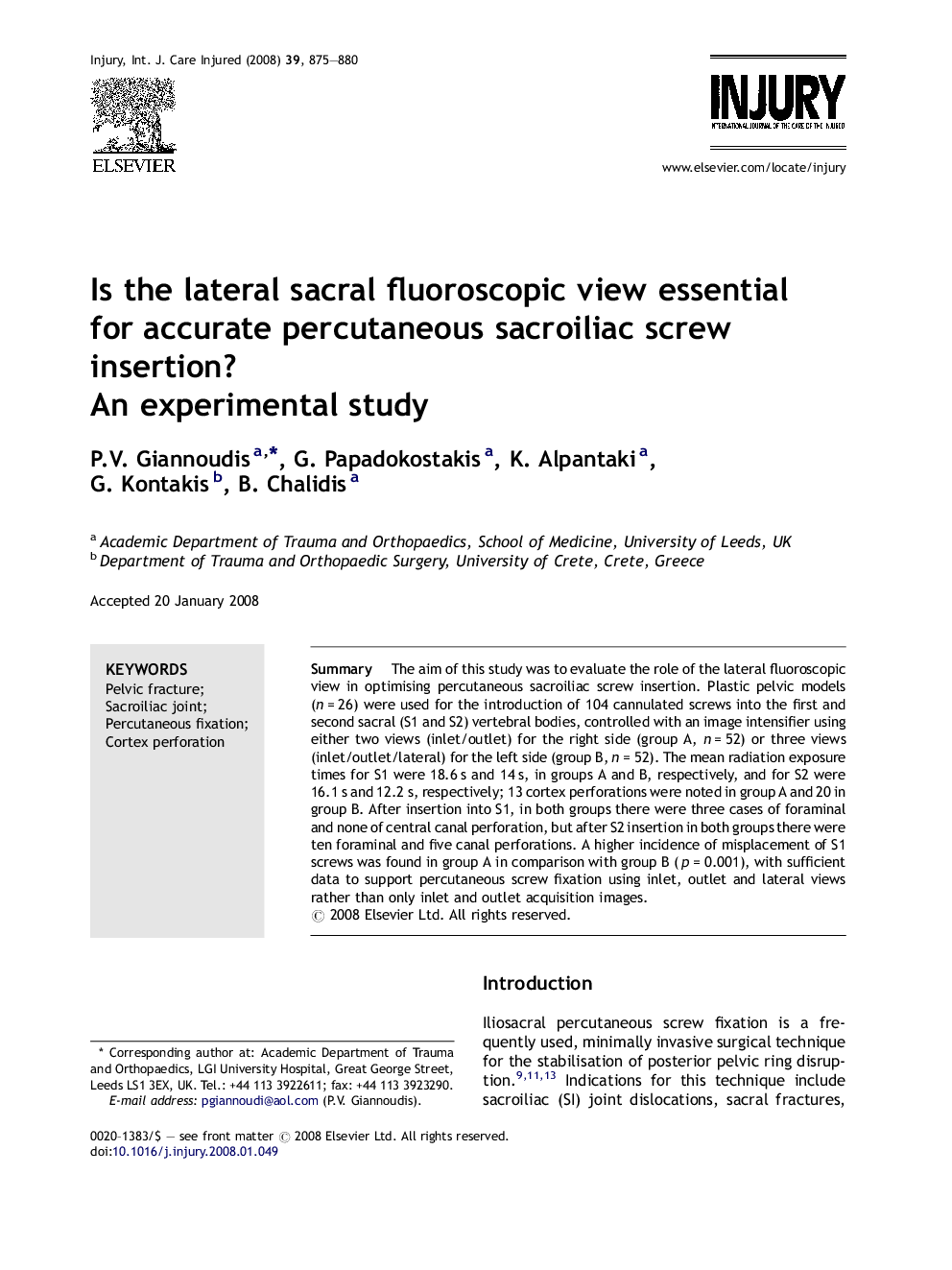| Article ID | Journal | Published Year | Pages | File Type |
|---|---|---|---|---|
| 3241610 | Injury | 2008 | 6 Pages |
SummaryThe aim of this study was to evaluate the role of the lateral fluoroscopic view in optimising percutaneous sacroiliac screw insertion. Plastic pelvic models (n = 26) were used for the introduction of 104 cannulated screws into the first and second sacral (S1 and S2) vertebral bodies, controlled with an image intensifier using either two views (inlet/outlet) for the right side (group A, n = 52) or three views (inlet/outlet/lateral) for the left side (group B, n = 52). The mean radiation exposure times for S1 were 18.6 s and 14 s, in groups A and B, respectively, and for S2 were 16.1 s and 12.2 s, respectively; 13 cortex perforations were noted in group A and 20 in group B. After insertion into S1, in both groups there were three cases of foraminal and none of central canal perforation, but after S2 insertion in both groups there were ten foraminal and five canal perforations. A higher incidence of misplacement of S1 screws was found in group A in comparison with group B (p = 0.001), with sufficient data to support percutaneous screw fixation using inlet, outlet and lateral views rather than only inlet and outlet acquisition images.
